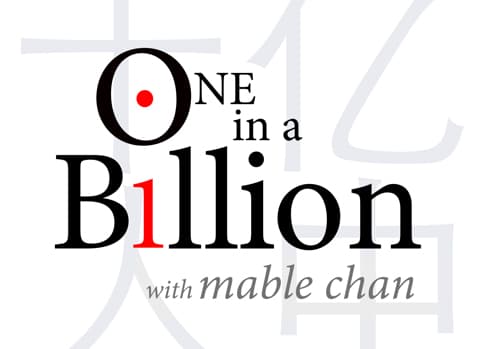Being on a shoot and on the set with Suze Orman took me back to the 1990s when I was but a young girl chasing and being chased by my sisters in an odd-looking pink house in the San Francisco Bay Area.
Maybe it was Suze’s neighborly charm that made me think I was with an old family friend — not a T.V. megastar with an estimated worth of $20 million. When I tried to thank Suze and shake her hand, she exclaimed, beaming, “Oh, let me give you a hug.”
But it was also Suze’s message of austerity and extreme saving that brought me back to those days when my mother admonished my sisters and I to reuse plastic bags and containers and chided us when we complained about wearing hand-me-downs. Saving was always something I associated with my Chinese parents who grew up during tough times in Taiwan. Their parents had fled the Chinese civil war in the 1940s and landed on Taiwanese shores essentially refugees with not much else save the clothes on their backs.
Suze is definitively American, however. She embodies the American dream. You would have never known that Suze had to overcome a speech impediment or waited tables until she was 30 or was once heavily in debt herself. It’s her honesty with her own mistakes that gives depth to her simple, seemingly common sense advice and gives her an appeal across demographics and cultures too.
Suze’s message – on this first half of the interview – was tackling debt by making it a priority. Even though the logistics of how to tackle debt will differ from person to person, what won’t change is the grand strategy of making debt your number one task. “It’s bondage,” Suze admonished.
She would know. In the 1980s, when Suze began her career in finance, she suffered a professional melt down that also left her with tens of thousands in credit card debt.
She told the New York Times Magazine in 2009, “I had $60,000 on my Amex alone.” On top of that, she had mortgaged her home, was leasing a BMW for $600 a month and — drum roll — used money from her 401(k) to pay for a $7,5000 Cartier watch to impress a date. If you know anything about Suze, stealing from your 401(k) is the ultimate no-no.
Now, Suze wants young graduates to learn from her mistakes. She offered the “Suze Orman” formula:
1. Make getting rid of your debt your top priority and do whatever it takes to get rid of it.
2. Don’t add to your student debt by taking on credit card debt. Don’t spend what you don’t have.
3. Don’t define yourself by how much money you have, by what clothes you wear and what car you drive. Cultivate your self-esteem by working hard and being honest with others, “I just can’t afford that right now.”
Suze herself wears the same earrings – gold square studs – on nearly all of her television appearances and on the covers of several of her books. When Suze explained this, pointing excitedly at her ears, I again had a flashback of my mother who has meticulously kept intact, since the 1980s, a black A-line skirt she wears at least two to three times a week.
Frugality, however, doesn’t come at the expense of generosity. Even at $80,000 a pop for speaking fees, Suze often donates her time and advice for free. And whatever happened to that $7,500 watch? Instead of cashing it in, Suze later gave it to a friend.
Some of you may be wondering, “Ok Suze, all good and well but to tackle debt, I need a job!”
Stay tuned for next Sunday’s video interview with Mable Chan, founder of China Personified – Suze will share her insight on how you can turn a low-paying job into something more.



